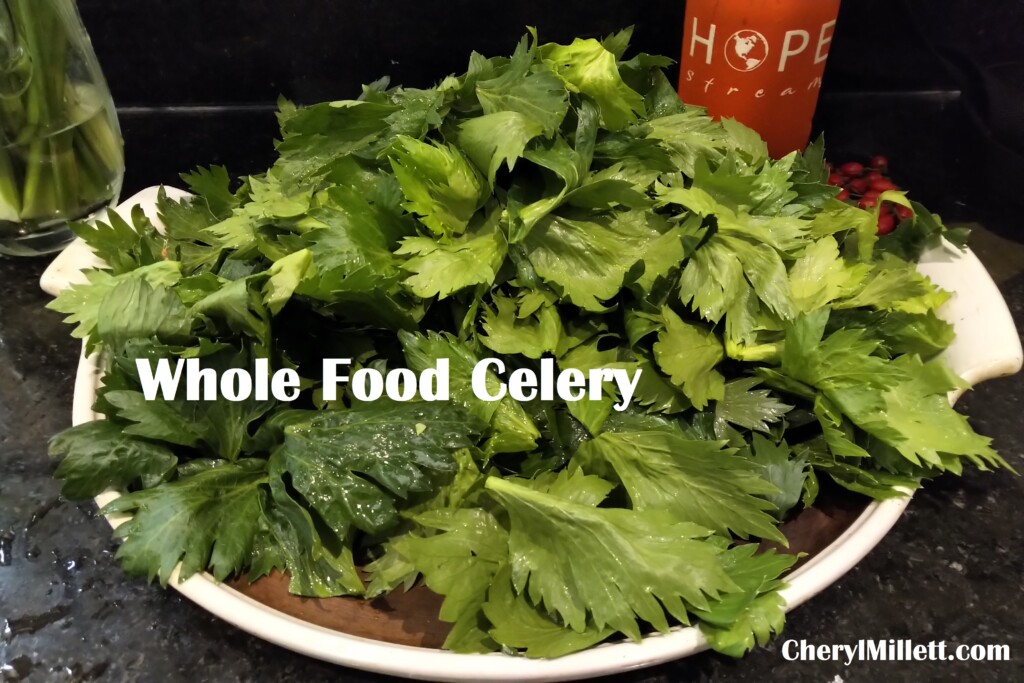
Celery used to get the checkmark for being a weight-loss food. Eat lots and low in calories and fat. In fact, you may have heard it was a calorie negative food but not sure if that is true or not. Behind this celery is an amazing whole food and one can dry the leaves for additional herb seasoning throughout the year. Pictures throughout.
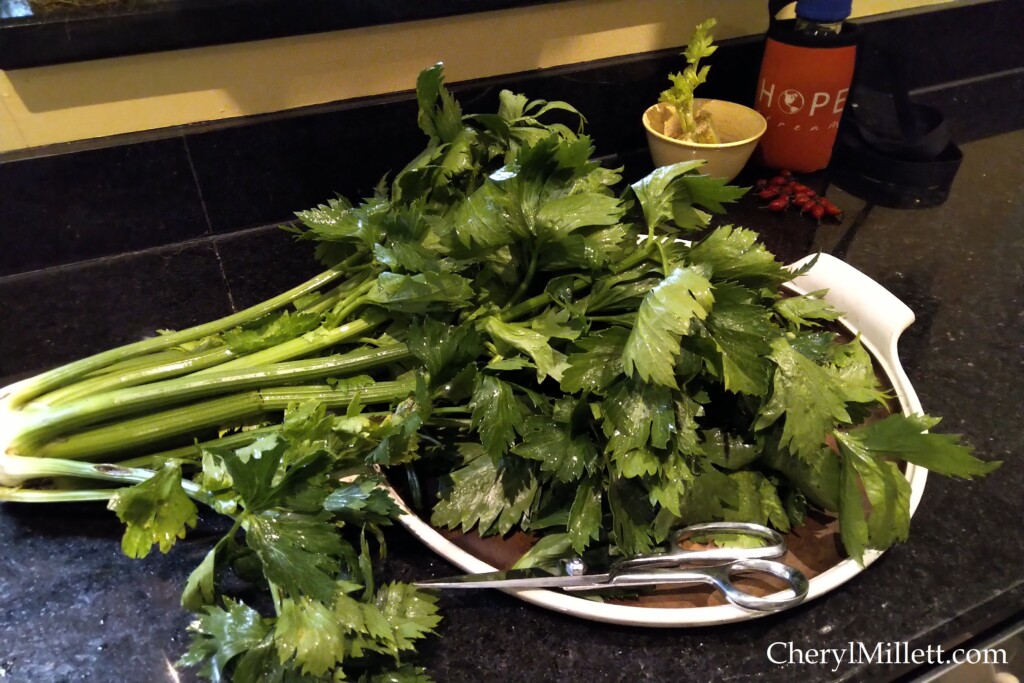
What Does King Tut Have To Do With Celery?
First, let me add that celery was found in King Tut’s tomb and for hundreds of years known to be well used in the Mediterranean region. Also, take note that celery was used as medicine in Egypt. Today, celery is one vegetable that is used all around the world and highly prized in many dishes from turkey stuffing to gumbo and jambalaya (Cajun dishes). According to some foodies and restaurants, celery could replace kale as the next healthy vegetable craze to eat! Already on that bandwagon and singing celery, celery, oh celery.
Whole food celery is listed as #11 on the top ‘Dirty Dozen’ list by the Environmental Working Group’s 2019 Shopper’s Guide to Pesticides in Produce for containing unwanted residues of pesticides so buy organic and I’ll add, learn to grow celery.
When studying Iridology, celery was known to contain a certain sodium that is good for the stomach and digestion. Celery juice or just eating as celery sticks is something I recommended to many clients who had stomach lining issues. Can’t get enough of that celery! Hmmm…reminds me of a song.
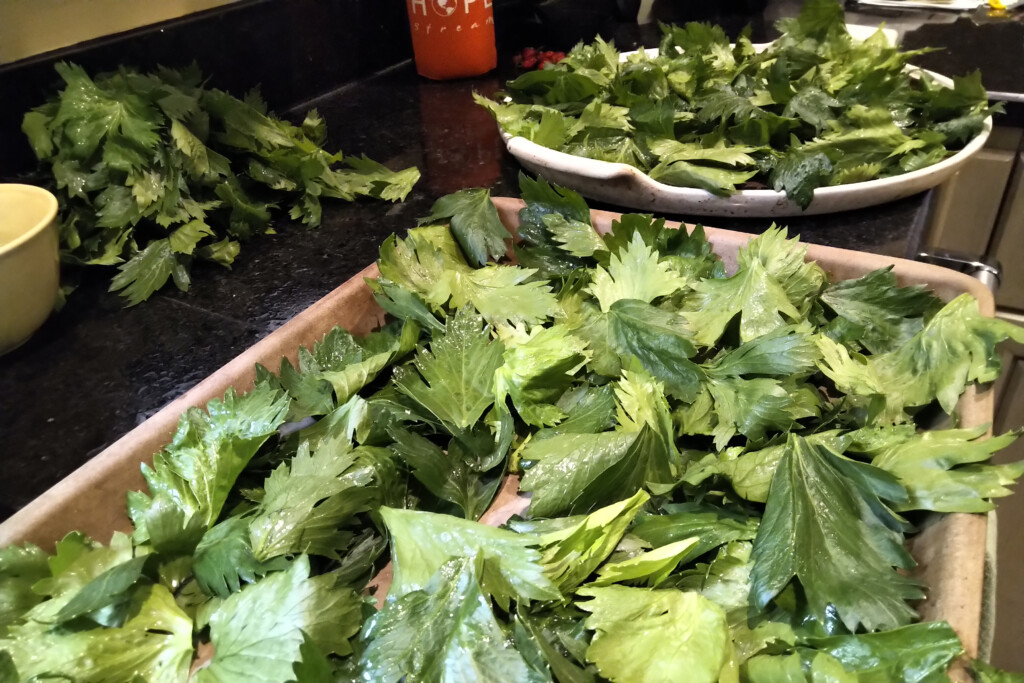
Nutrients in Whole Food Celery
Here are some of the nutrients it contains and what health claims have been made by eating celery, and you tell me if this is the next vegetable superfood.
Although not considered a nutrient, the whole food celery is rich in water which we all know we are water bags so a very good thing for hydrating the body therefore great for our health. According to the Food Data Central (U.S. Department of Agriculture), celery contains calcium, iron, potassium, sodium, vitamin A, vitamin C, and vitamin K. This is one for the label. Additionally, celery juice contains copper, lutein + zeaxanthin, magnesium, phosphorus, zinc, selenium, and vitamin E. In addition, celery contains phytochemicals, such as, flavonols which are anti-inflammatory and anti-oxidative, and a variety of B vitamins but not B12. B12 is a nutrient best found in animal products and those that eat a vegan/vegetarian diet may fall into a vitamin B12 deficiency.
Shall spill the beans here…when it comes to plant-based nutrients they may be different than animal. Vitamin A has different forms. Plant vitamin A, such as, beta carotene which is found in celery, is different than animal vitamin A, such as, retinol. Learned about my ABCs (vitamins A, B, and C) from educating on seal oil. Seals are mammals so their essential omegas are mammalian whereby fish omegas are different than mammalian. Longer story so back to celery.
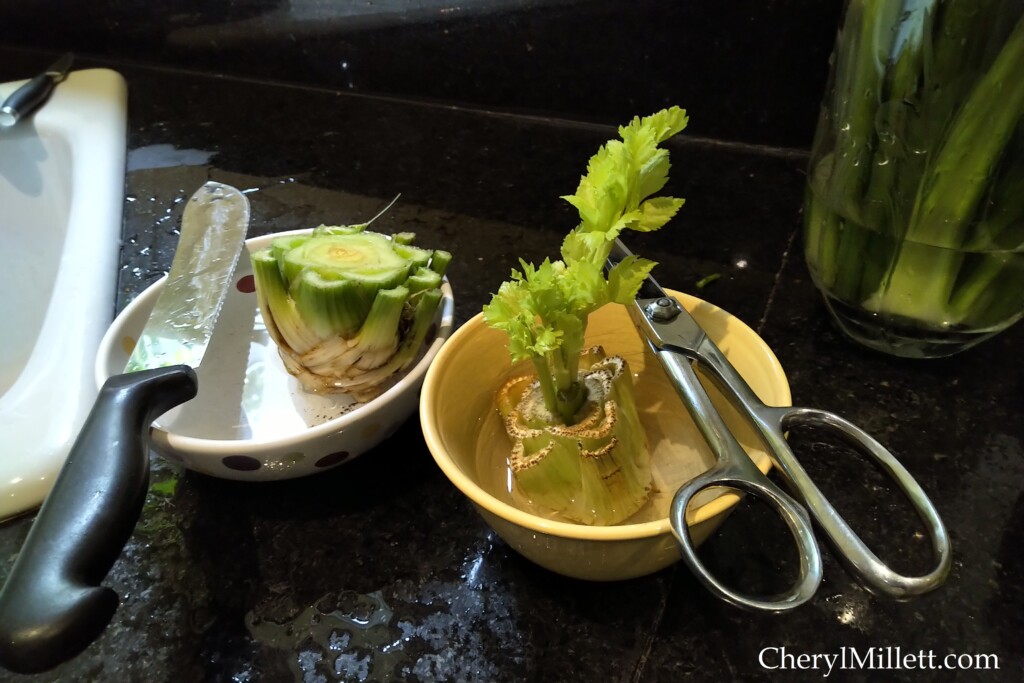
Benefits of Consuming Celery
Let’s now explore what medical shares on the benefits of consuming celery, no sense just staring at it. Medicinally ancient Egypt, Rome, and China may have used celery for indigestion and arthritis. According to the OrganicFacts.net and various quoted research, celery has the following benefits. Are you ready?
- Lowers cholesterol level
- Reduces blood pressure
- Prevents urinary tract infections
- Lowers arthritis pain
- Anticancer properties
- Boosts immune system
- Reduces asthma symptoms
- Improves heart health
- Regulates fluid balance
- Relieves migraines
- Controls diabetes
- Nerve tonic
- Weight loss
- Neuritis
- Asthma
- Prevents constipation
- High blood pressure
- Periodontitis and catarrh
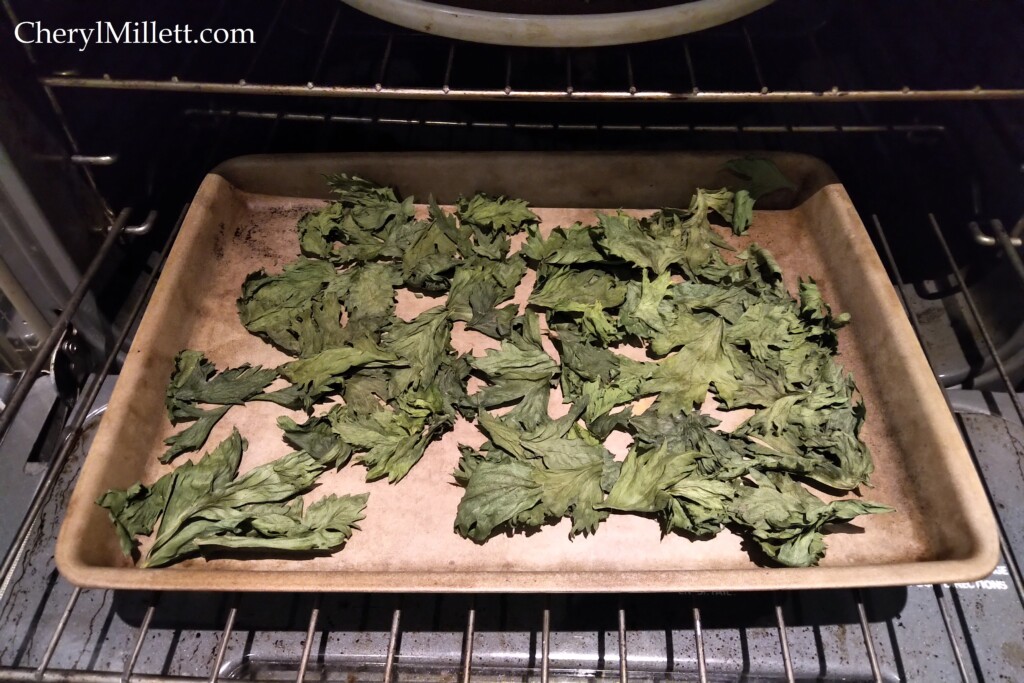
And I am sure the list goes on because I have learned that every disease has an inflammatory component. Since celery is anti-inflammatory then we are good to go and good as green. Eat the essential nutrients in a variety of foods and see what is leftover. Stress is another culprit behind disease.
Celery Storage

To store celery, place it in an upright position in a pitcher or large glass in the refrigerator with some water. You may trim the leaves and dry. Trim the bottom and regrow some leaves for use in a soup or salad just one last kick at the celery, then compost. Drying the leaves is easy and you will become a star in the kitchen with the foodies.
Directions to Dry Celery Leaves for Herb Seasoning
Trim your celery leaves using scissors. You will thank me later. Try to cut just the leaves. Place on a cookie sheet or stoneware baking sheet/pizza pan. Spread out the leaves on the trays. Heat oven to 150 to 200 degrees or use a dehydrator. Place trays into the oven. I did two trays and two loads due to the amount of leaves on the celery because they do not cut them off at the Farmer’s Market. One tray on the bottom rack and one tray on the top rack which leaves space between the two trays. Leave in the oven for approximately 15 minutes then check on them. Perhaps turn over some of the leaves and leave for 10 minutes and check. Continue to check every 10 minutes or less until the leaves are green and dry. Put dried leaves in a medium to a large bowl and use clean hands to break up into small pieces. This is a good exercise for the fingers. Remove and discard any stems or undried leaves. Once done, pour your celery herb into a dry glass spice container and use to your heart’s content.
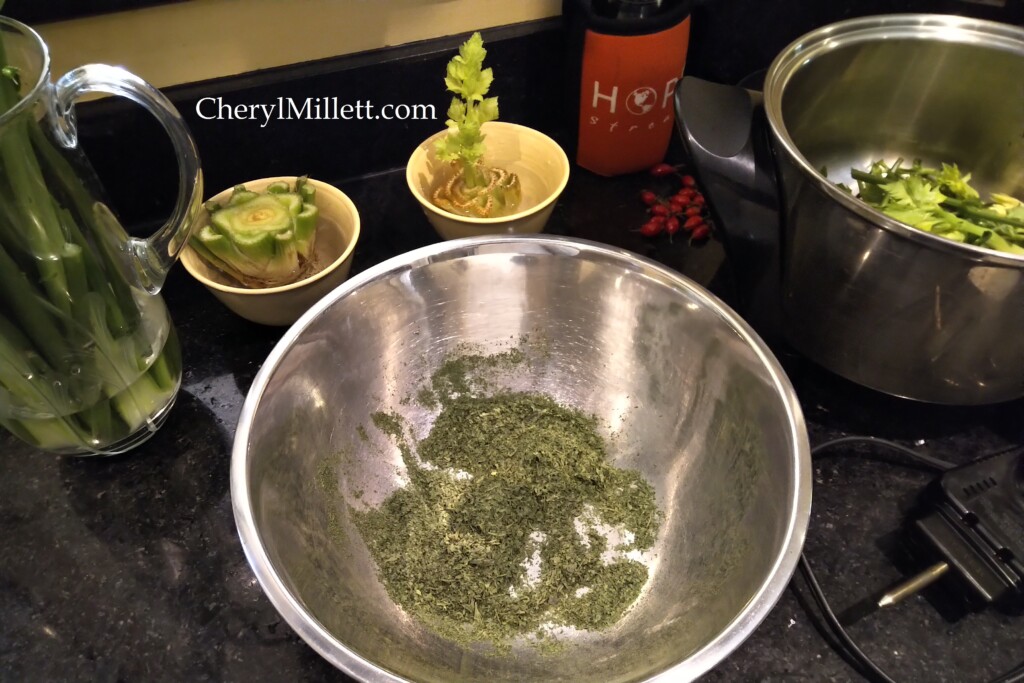
Celery Herb Uses
This is the fun part. You can use your celery herb where parsley is in the recipe. Sprinkle into soup, sauces, stews, and salads. Use anywhere celery is used in the recipe. Sprinkle on a variety of dishes, such as rice, potatoes, egg dishes, and pasta. Most recently, I sprinkled it into the turkey stuffing.
Guess what, there are not too many people that have celery herb in their cupboards so you will surprise the foodies in your life. And the smell of the dried celery leaves is crazy lovely for the nose so give those foodies a good whiff of the herb jar.

Cheryl Millett
Champion for your better health…





